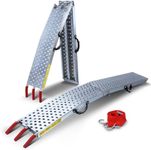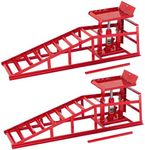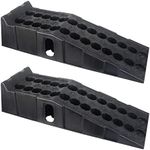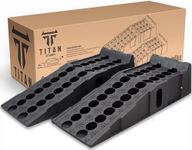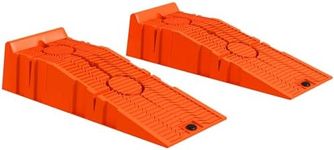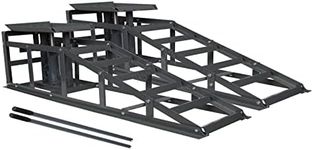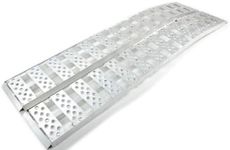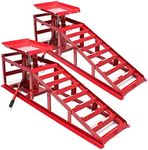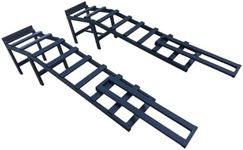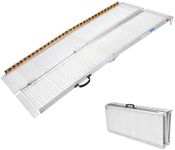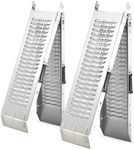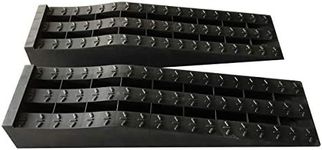Buying Guide for the Best Car Ramps
Choosing the right car ramps is essential for safely and effectively lifting your vehicle for maintenance or repairs. When selecting car ramps, consider factors such as the type of vehicle you have, the weight capacity of the ramps, and the ease of use. Understanding the key specifications will help you make an informed decision and ensure that the ramps meet your needs.Weight CapacityWeight capacity refers to the maximum weight that the car ramps can support. This is crucial because using ramps that cannot handle your vehicle's weight can lead to accidents or damage. Car ramps typically come with weight capacities ranging from 6,000 to 16,000 pounds. To choose the right weight capacity, check your vehicle's gross weight and ensure the ramps can support it comfortably. If you have a heavier vehicle like a truck or SUV, opt for ramps with higher weight capacities.
Ramp AngleRamp angle is the steepness of the incline on the ramps. This is important because a steeper angle can make it difficult for low-clearance vehicles to ascend without scraping the underside. Ramp angles generally range from 10 to 17 degrees. If you have a sports car or a vehicle with low ground clearance, look for ramps with a lower angle to ensure smooth and safe access. For higher-clearance vehicles, a steeper angle may be acceptable.
MaterialCar ramps are made from various materials, including plastic, aluminum, and steel. The material affects the durability, weight, and ease of handling. Plastic ramps are lightweight and easy to move but may not be as durable as metal ramps. Aluminum ramps offer a good balance of weight and strength, while steel ramps are the most durable but can be heavy. Choose the material based on your need for portability and the frequency of use. If you need ramps for occasional use, plastic may suffice, but for regular heavy-duty use, steel or aluminum is preferable.
Width and LengthThe width and length of the ramps determine how well they accommodate your vehicle's tires and overall size. Wider ramps provide better stability and are essential for vehicles with wider tires. Length affects the ramp angle and the ease of ascent. Ramps typically range from 10 to 20 inches in width and 30 to 50 inches in length. Measure your vehicle's tire width and overall dimensions to ensure the ramps are a good fit. Wider and longer ramps are generally safer and easier to use, especially for larger vehicles.
Surface TextureSurface texture refers to the grip or traction provided by the ramp's surface. This is important for preventing your vehicle from slipping while ascending or descending the ramps. Ramps with a textured or ribbed surface offer better traction compared to smooth surfaces. When choosing ramps, consider the surface texture to ensure safe and secure use. If you often work in wet or slippery conditions, prioritize ramps with enhanced grip features.
PortabilityPortability is the ease with which you can move and store the ramps. This is important if you need to transport the ramps frequently or have limited storage space. Lightweight ramps made from plastic or aluminum are easier to carry and store compared to heavy steel ramps. Consider how often you will need to move the ramps and choose accordingly. If portability is a key concern, opt for ramps that are lightweight and have built-in handles or storage features.
